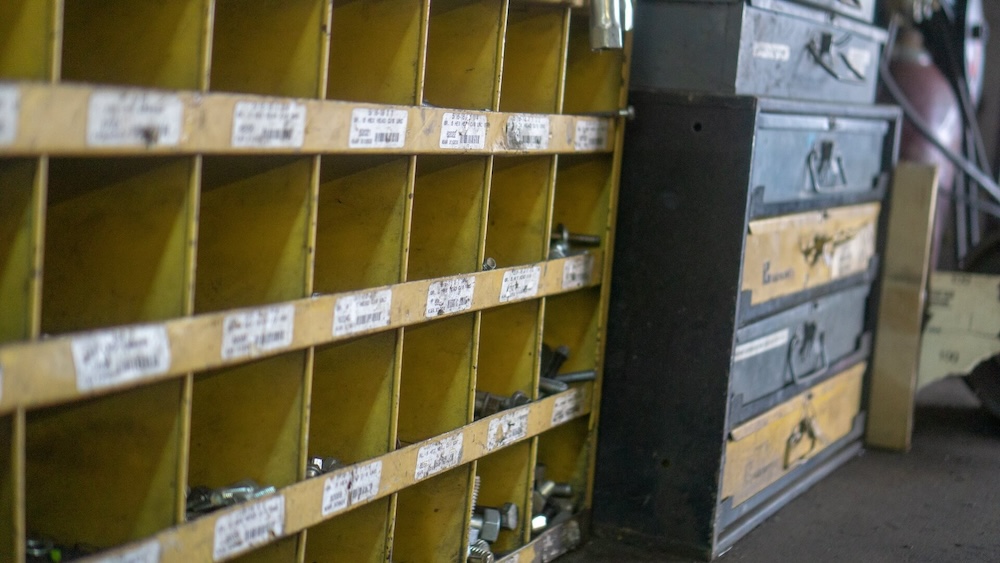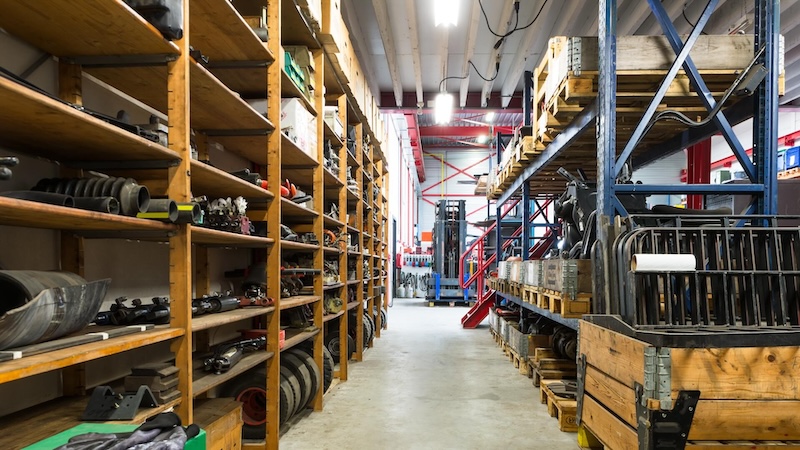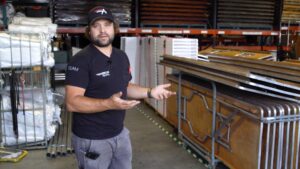We’ve all done it.
When I worked in the event industry, there was one year where people started asking about gold flatware. We jumped to stay ahead of the trend, purchasing over 1,000 pieces of gold place settings to match our existing gold-band plates. The fad never fully materialized, and after eight years, we never recovered the cost of that inventory.
That’s eight years we spent walking by money that’s just sitting there, wasting away on a shelf.
But overstocking isn’t limited to event companies.
I’ve worked for more than a decade in the rental industry, running my own business. I’ve seen hundreds more rental businesses throughout the world at Point of Rental, implementing software and training customers.
We all have parts we’ve never used, collecting dust in our stockrooms. And we’re wasting way too much time and money overstocking parts we’re never going to use.
Why Do We Overstock Parts?
There’s always a reason to overstock on parts.
- The supplier was offering a bulk discount that was “too good to pass up.”
- During the supply chain disruptions following the COVID pandemic, we had to stock up. Who knows when we’ll be able to get parts again? the thinking went. We’d better get what we can now, so we can ride this out.
- Equipment downtime is a HUGE problem, so anything that cuts down on it is worth it.
- “We don’t usually do this, but we double-ordered parts because a person ordered replacement parts without letting the rest of the team know.”
But at the end of the day, all our “reasons” are just another word for “excuses”.
We wouldn’t hire employees to sit around and do nothing 24/7, so why invite these wastes of space, time, and money into our offices so they can sit there?

Rental Parts Stocking Tips
Let’s start by picturing parts availability in an ideal world: The perfect situation is not having anything stored on-hand, but always having exactly the part you need, the second you need it.
You’d have zero downtime due to waiting on parts while maximizing your shop space.
Unfortunately, this isn’t an ideal world, so let’s figure out what we need to get as close to that ideal as possible.
- You’ll need to be able to trust your suppliers. The more you work with companies that have a strong supply chain and quick turnaround times, the easier it is to plan ahead. COVID-level supply line disruptions are few and far between; you don’t need to live like that for the rest of your life.
- You’ll standardize your fleet. Instead of having 500 different suppliers with their own made-especially-for-this-one-machine parts, you’ll have a handful of suppliers, all with those great supply chains and customer service we just mentioned.
- You’ll need some digital tools. Different parts need to be replaced at different rates, depending on what machine they work with, the rate of wear, how often items are being rented, etc. Even the best technician has no chance of remembering the replacement intervals on every part for every machine you own (we’re assuming you rent several different machines).
- Use those digital tools to identify the parts that you need to stock. This is the one excuse we can accept: There are some parts that you’re constantly replacing (filters, belts, hoses, etc.), and it makes sense to have some of these on hand. Utilization is important. But you probably need fewer of them than you have right now.
- Order even those parts only when supplies are running low. Ordering a “lifetime supply” of any product doesn’t work out well for anyone. First, you’re wasting a ton of space, then you tend to run out well before your life is over. Stick to ordering enough that you’ll have them on-hand but you can maintain them in a reasonable amount of space.

Tools You Can Use For Smarter Parts Stocking
There are a few tools within your rental management software that can help you minimize wasted storage while maximizing your uptime.
Reporting
Reporting helps you identify which parts you’re using most often so you can determine the items you need to have on hand. In addition to your overall utilization reports, you can look at data in other ways to get even more accurate forecasting.
Seasonal trends
If you live in the Northern U.S. and Canada, you’ll need more snowblower parts in winter and more lawn care equipment in the summer; using year-over-year utilization reports, you’ll be able to identify exactly when “busy season” for a type of equipment is going to hit so you’re ready for it.
Service Intervals
By setting up your servicing intervals for each piece of equipment and tracking the number of each item you have, it becomes easier to see how many belts, hoses, and filters it makes sense to order each month.
Dynamic Reordering
Dynamic Reordering is an easy way to see all the items you’ve sold and/or used in a given period of time, helping you re-stock with a reasonable amount of inventory. You can even dynamically order from an individual purchase order.
SmartEquip
SmartEquip helps you quickly and easily identify what parts need to be replaced in almost any piece of equipment. It also integrates with a lot of rental management systems, like Point of Rental’s Expert and Elite, to create purchase orders for those items automatically, so you can get them as quickly as possible.
If you’re not going to use it in the next 30 days, it shouldn’t be in your shop. Put your excess space to work for you instead of filling it with one more thing to wade through when you’re trying to find the right part.




